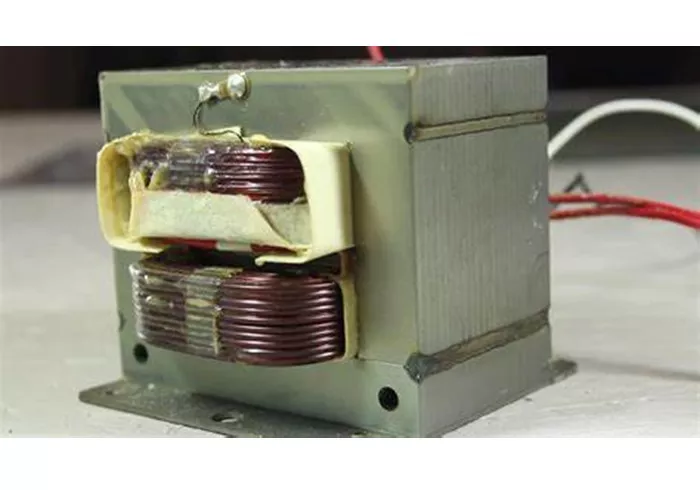Microwave transformers are specialized electrical components originally designed for microwave ovens, but their unique properties make them useful for various DIY projects and industrial applications. These transformers are compact, high-voltage devices that can be repurposed for creative and technical uses beyond their initial function. This article explores the capabilities of microwave transformers, their working principles, and practical applications in detail.
Understanding Microwave Transformers
A microwave transformer, also known as a high-voltage transformer (HVT), is a type of step-up transformer that converts standard household voltage (110V or 220V) into high-voltage electricity (typically 2000V or more) to power the magnetron in a microwave oven. These transformers are robust, efficient, and capable of handling significant power loads, making them suitable for modifications and alternative uses.
Key Components of a Microwave Transformer
Primary and Secondary Windings: The primary winding connects to the input voltage source, while the secondary winding produces the high-voltage output required for the magnetron.
Magnetic Core: Made of laminated steel, the core enhances magnetic flux efficiency and minimizes energy losses.
High-Voltage Insulation: Special insulation materials prevent electrical breakdown under high-voltage conditions, ensuring safety and durability.
Practical Applications of Microwave Transformers
High-Voltage Power Supplies
Microwave transformers can be modified to create high-voltage power supplies for scientific experiments, such as plasma generation or electrostatic demonstrations. By rewinding the secondary coil or adjusting the output, these transformers can produce voltages suitable for Jacob’s ladders or Tesla coil prototypes.
Spot Welding Machines
One of the most popular DIY uses of a microwave transformer is building a spot welder. By removing the secondary winding and replacing it with a few turns of thick copper wire, the transformer can deliver high-current, low-voltage output—ideal for welding thin metal sheets or battery tabs.
Induction Heating Systems
When combined with a resonant capacitor and a work coil, a modified microwave transformer can function as a simple induction heater. This setup is useful for heating conductive materials quickly and efficiently, often employed in small-scale metalworking or jewelry making.
Electrical Discharge Machining (EDM)
Microwave transformers can power small EDM setups, which are used for precision cutting and shaping of hard metals. The high-voltage output enables controlled spark erosion, making it possible to machine intricate parts without physical contact.
Educational Demonstrations
In physics and engineering labs, microwave transformers serve as excellent tools for demonstrating high-voltage phenomena, such as corona discharge or dielectric breakdown. Their relatively safe design (when handled properly) makes them suitable for educational purposes.
Safety Considerations When Using Microwave Transformers
High-Voltage Risks
Microwave transformers operate at lethal voltages, posing severe electrical shock hazards. Proper insulation, grounding, and the use of protective gear (such as rubber gloves and insulated tools) are essential when working with these devices.
Overheating and Fire Hazards
Due to their high power output, microwave transformers can overheat if used continuously without adequate cooling. Ensuring proper ventilation and monitoring temperature during operation is crucial to prevent accidents.
Capacitor Discharge Danger
Microwave ovens contain high-voltage capacitors that can retain charge even after disconnection. Always discharge capacitors safely before handling or modifying the transformer.
Modifying a Microwave Transformer for DIY Projects
Removing the Secondary Winding
To repurpose a microwave transformer, the existing high-voltage secondary winding is often removed and replaced with a custom coil. This process requires careful disassembly to avoid damaging the core or primary winding.
Rewinding for Custom Voltage Output
By adjusting the number of turns in the secondary winding, the output voltage can be tailored for specific applications. Fewer turns yield lower voltage but higher current, suitable for spot welding, while more turns increase voltage for high-energy experiments.
Adding Cooling Systems
For prolonged use, adding a cooling fan or heat sinks can prevent overheating. Some advanced modifications include oil immersion for better thermal management in high-power applications.
Comparing Microwave Transformers to Other Transformers
Differences from Distribution Transformers
Unlike distribution transformers, which are designed for long-term, low-loss operation, microwave transformers prioritize compact size and high-voltage output. They are not optimized for energy efficiency but excel in delivering intense bursts of power.
Advantages Over Flyback Transformers
While flyback transformers are also used in high-voltage applications, microwave transformers offer higher power handling and durability, making them preferable for heavy-duty projects like spot welders or induction heaters.
Future Innovations and Experimental Uses
Renewable Energy Applications
Researchers are exploring the use of repurposed microwave transformers in small-scale renewable energy systems, such as wind or solar power inverters, due to their high-efficiency conversion capabilities.
Advanced High-Voltage Research
In laboratories, modified microwave transformers contribute to experiments in plasma physics, particle acceleration, and high-energy electrical discharges, pushing the boundaries of DIY science.
Conclusion
Microwave transformers are versatile components with a wide range of applications beyond their original purpose. From DIY spot welders to high-voltage experiments, these transformers offer endless possibilities for hobbyists, engineers, and researchers. However, their use requires strict adherence to safety protocols due to the inherent risks of high-voltage electricity. By understanding their design and potential, you can unlock innovative solutions for both practical and experimental projects.
Whether you’re an electronics enthusiast or a professional engineer, the microwave transformer stands as a testament to the adaptability of electrical components in solving real-world challenges. With creativity and caution, this humble device can power some of the most exciting and impactful projects in modern electronics.
Related Topics:

